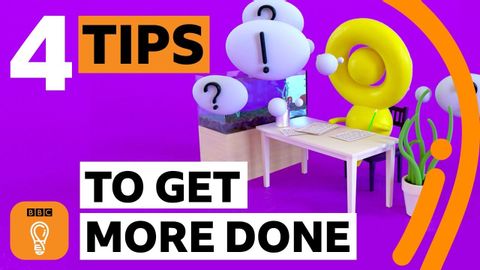想要更有成效?4 招教你事半功倍 (How To Be More Productive | Productivity Tips and Hacks | BBC Ideas)
Annie Huang 發佈於 2020 年 07 月 04 日  沒有此條件下的單字
沒有此條件下的單字US /ɪnˈtɛns/
・
UK /ɪn'tens/
US /ˈkɑnʃəs/
・
UK /ˈkɒnʃəs/
- adj.意識到;注意到;故意的;有意的;過於擔心的;過於顧慮的
US /əˈprəʊtʃ/
・
UK /ə'prəʊtʃ/
- v.t./i.逼近;找...商量
- n. (c./u.)通道;入口;接洽;處理方式;方法
US /ˈrɪtʃuəl/
・
UK /'rɪtʃʊəl/
- adj.儀式的;例行公事;習慣
- n. (c./u.)儀式;習慣
